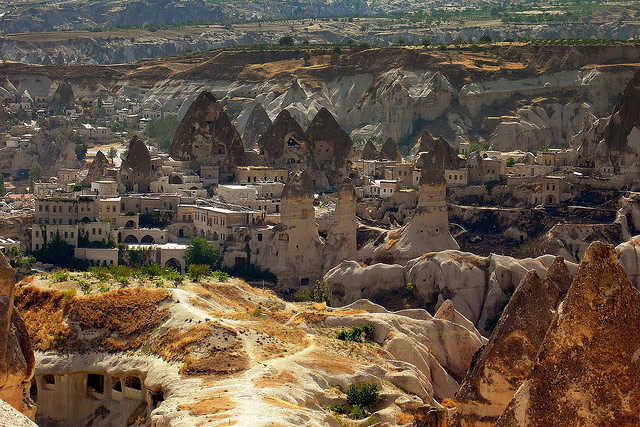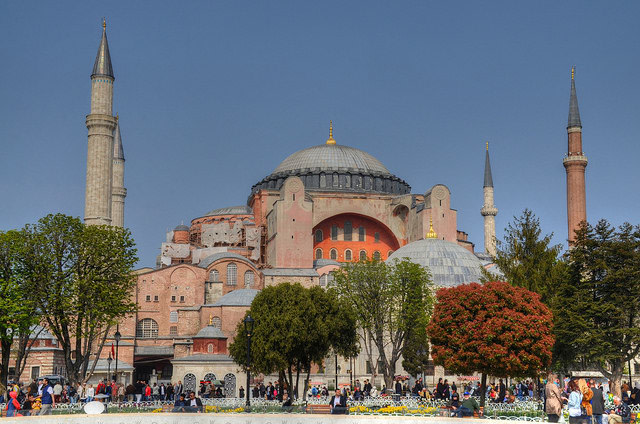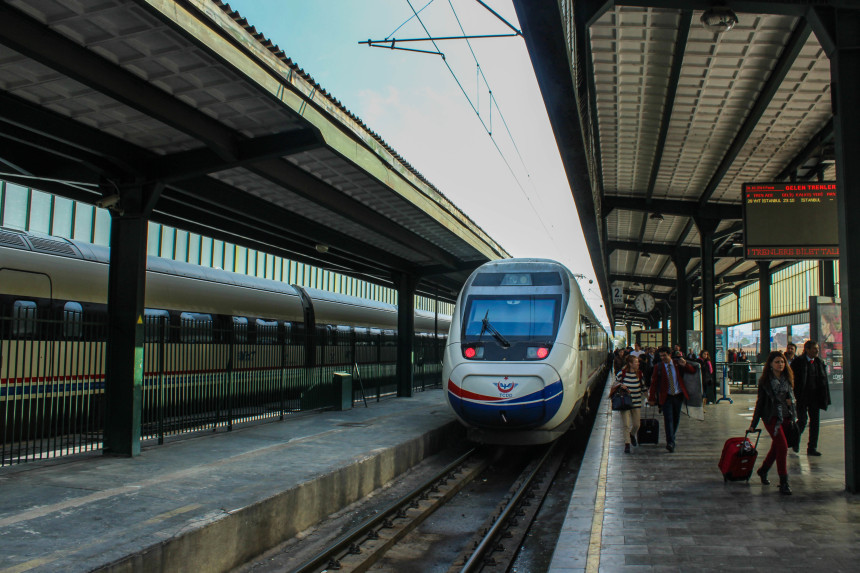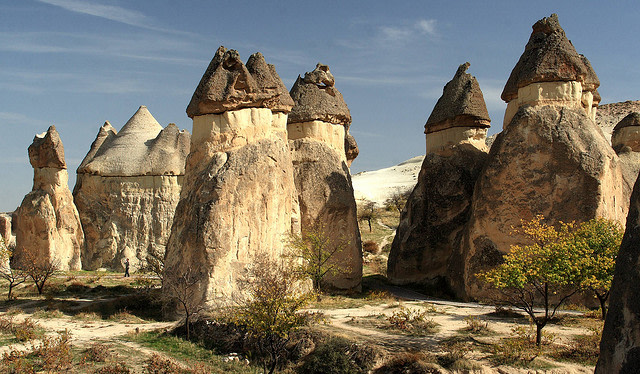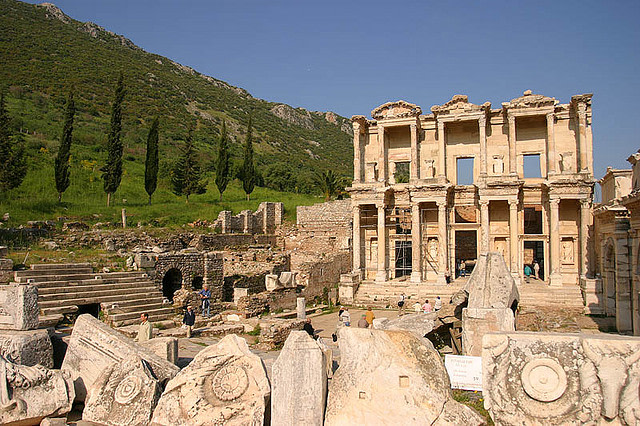| 7 mins read
By Jennifer Mullen
A journey to Turkey could involve many methods of transport, such as a boat round one of her breathtaking coastlines, or a bus which meanders through the heart of her countryside. Turkey, thanks to her sheer scale and diversity, is more like a continent, so choosing to take to the rails is a really good option. The country has an impressive fleet of air-conditioned, modern trains, which are fast, reliable and comfortable, and even constructed by German engineers (the joke goes that the lines were paid by the kilometre, hence the twisting and turning nature!).
The ever-changing scenery from a train can provide the perfect backdrop to experience the presence of her cities, the magnitude of her mountains and the appeal of her quaint villages. A knowledgeable Turkey tour guide will help you plan your dream trip, in order to see, hear, smell and taste the history and culture of this vast destination. Indeed, even packing your suitcase will be a difficult task, due to the country’s diverse climate, which includes snowy Alpine peaks, wind-whipped steppe, arid deserts and olive coloured Mediterranean hills.
The logistics of train travel in Turkey are fairly straightforward. Most major stations have a computerised ticketing and reservation system (which accept foreign credit cards), so you can book the type of seating required, such as seats, couchettes and sleepers.
If you ask an intrepid traveller about epic train journeys spanning continents, the Trans-Siberian Railway or the Orient Express would be obvious choices. The lesser known journey of the Vangölü Ekspresi in Turkey, has to be one of the most intriguing rail journeys in the world, giving travellers the definitive sensation of being thrust from Europe, deep into Asia. The trip takes nearly two days to traverse the entire country west to east, from Istanbul to Lake Van, which is only 180km west of the Iranian border. Lake Van is Turkey’s largest lake and some of its more famous feline residents are the van cats, whose characteristics include different coloured eyes and an unusual love of swimming in water!
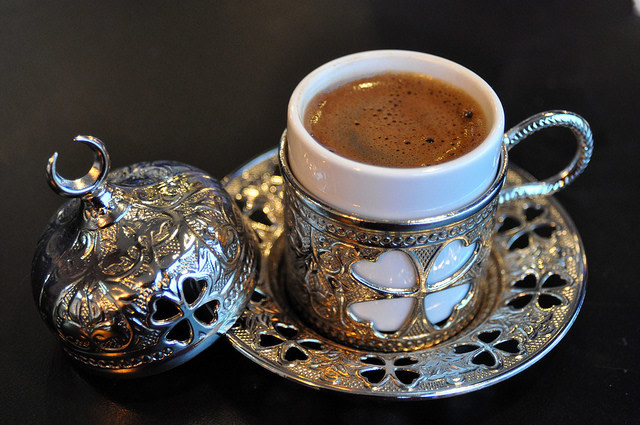
Istanbul, the only city in the world, which spans two continents proudly boasts of a three thousand year old history and was capital of the Eastern Roman Empire (coincidentally the city is the same latitude as Rome and is also built on seven hills). Getting round Istanbul is cheap and easy on the metro, costing a mere 4 Lira (approximately 44 cents US). Above ground the skyline of Istanbul is dominated by the Hagia Sofia, which is one of the greatest examples of Byzantine architecture. To avoid the crowds, take a look at the sixth century Kuçuk, which means “Little Hagia Sofia”, with its brilliantly coloured frescoes. The personality of Istanbul really comes to life in the Kapalı Çarşı (Covered Market or Grand Bazaar), which dates back to Byzantine times and has 64 streets, 4,000 shops and 25,000 workers.
In 2014 a new high speed link was opened up, connecting Istanbul and Turkey’s capital, Ankara, in a mere four hours. Costing 8.6 billion Turkish Lira ($4.1 billion) and reaching impressive speeds of up to 250 km/ph, this handy rail link will allow you to recharge your batteries before disembarking at Ankara, with its Mediterranean climate.
Ankara is famous rich history can be traced back through Hellenic, Roman, Byzantine and Ottoman civilisations through its architecture. The most famous attraction in Ankara is the Ataturk Mausoleum, which is the resting place of Mustafa Kemal Ataturk, father of the Turkish nation. Wandering round the city, visit former Roman baths, temples and towering columns; with so much history, it is very valuable to engage the services of an experienced Ankara guide, to explain the significance of architecture, astrology and engineering structures, in order to fully bring to life how these civilisations used to live.

Your Anatolian tour guide will help you find the best place to make your “pottery kebab” booking. To get here by rail, travel from Ankara to Kayseri, or a high-speed train to Konya. Bus routes will then take you to your chosen Cappadocian town. Uchisar has an impressive citadel, which can offer some of the best views in Anatolia, except of course, if you decide to go one step better and take a hot air balloon ride. Some of these dawn balloon rides depart at 4am and have you back in bed by 6.30am, wondering if it was all a dream.
Another possible trip, which will satisfy even the most experienced traveller, is heading to Izmir on the West Coast, to link up with Selcuk, which is located next to the grand archaeological sites of Ephesus. It is estimated that this city dates back up to 2000 years BC and every year over a million visitors come to marvel at its glistening white marble ruins, such as the theatre, library and terrace houses. An experienced Ephesus tour guide will help bring the city to life, such as how they lit their streets, listened to music or held celebrations. If you travel to this region in January, one eye opening festival you can experience is camel wrestling, where two bull camels fight for the fluttering eye lashes of a female camel! Unfortunately trains do not cover a large part of Turkey’s Mediterranean coastline; therefore here it will be necessary to combine your trip with a bus or a boat.
Turkey has countless spectacular places to intrigue travellers. Taking the train will not only give you beautiful and constantly changing scenery, it will also allow you to meet some local people, to learn a few words in the Turkish language and hopefully exchange a few tales of your own history.
(Jen Mullen is a seasoned traveler, having lived and worked in the UK, Germany, Switzerland, Australia and most recently South India. In her opinion, the best parts about traveling are meeting the locals, sampling as much new food as possible, and making an effort to learn new languages)
Image Details and Licenses: https://flic.kr/p/nCx47 (dachalan, CC BY-NC-SA 2.0), https://flic.kr/p/o8d6x (Chris Hill, CC BY-NC-ND 2.0), https://flic.kr/p/876HSp (James Guppy, CC BY-NC-SA 2.0), https://flic.kr/p/nJwjPj (Mark H. Anbinder, CC BY-NC-SA 2.0), https://flic.kr/p/mKkPAQ (Stephen Downes, CC BY-NC 2.0), https://flic.kr/p/fmZzc8 (Timon91, CC BY-NC 2.0), https://flic.kr/p/5eyvtN (M.G. Kafkas, CC BY-NC-ND 2.0), https://flic.kr/p/djcGRi (Moyan Brenn, CC BY-ND 2.0), https://flic.kr/p/5JHSVy (Frank Kovalchek, CC BY 2.0), https://flic.kr/p/3bodTR (johncatral, CC BY-NC-ND 2.0) https://flic.kr/p/q8fLmn (Timon91 CC BY-NC-SA 2.0)


